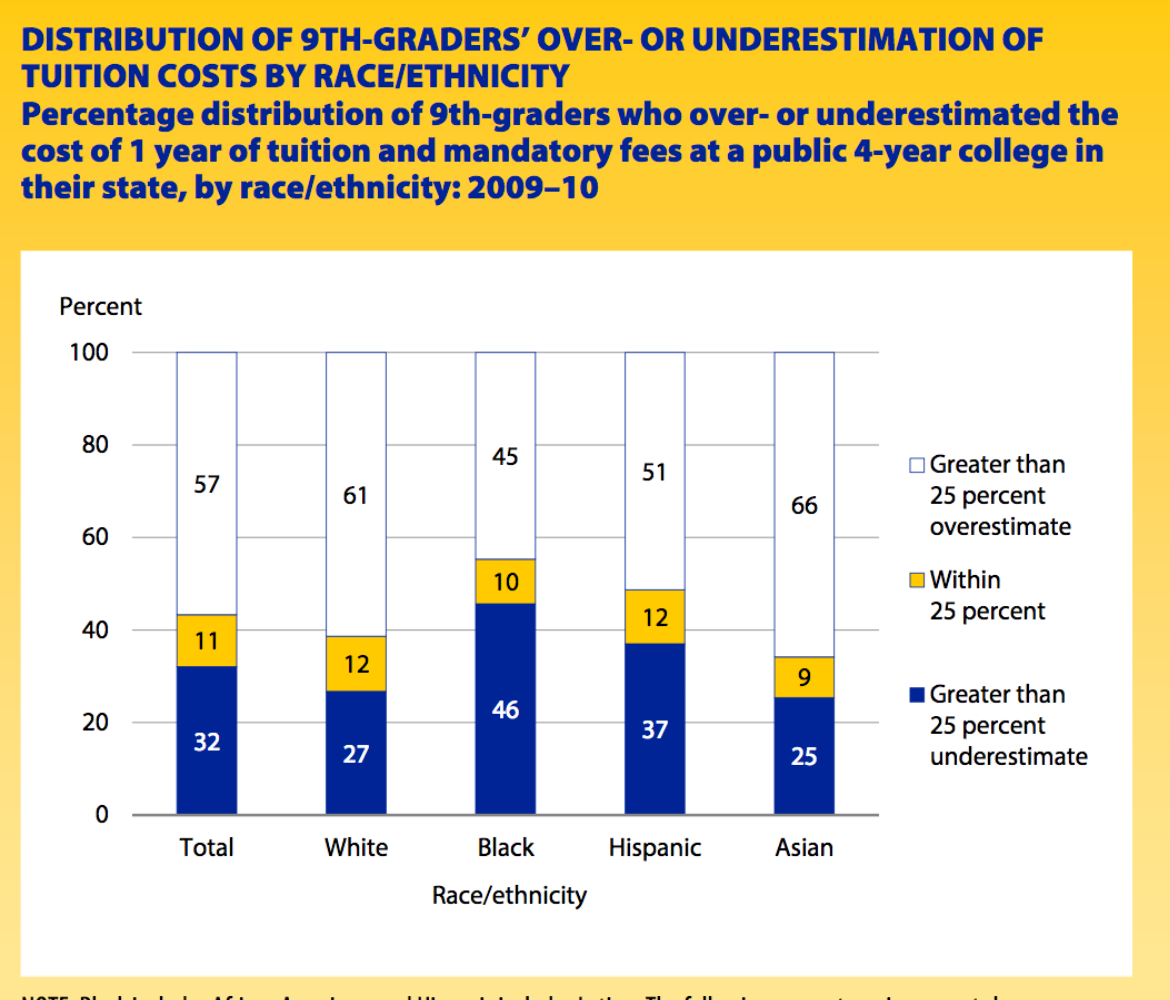You have /5 articles left.
Sign up for a free account or log in.

Getty Images
A major challenge for those trying to improve college-going rates is to help high schoolers and their parents know what it would actually cost them to enroll. For some families, who can afford to save, it's a matter of helping them have targets that will give future students various choices. For families without much money, the information is still important -- as they may see how various aid programs would provide enough support to make college a realistic option. A long-standing concern has been that many students and families overestimate tuition rates.
A new study from the National Center for Education Statistics suggests that these challenges have not gone away. And the study reinforces the importance of the issue, saying that "uncertainty about college costs and the availability of financial aid has been associated with under-enrollment among low-income and minority students."
A key finding, based on longitudinal federal surveys of high school students, is that 11 percent of ninth graders had estimates of public college tuition and fees in their states that were close to accurate, The majority (57 percent) overestimated tuition and fees, and about one-third (32 percent) underestimated. Tuition and fee estimates ranged from more than $10,000 lower than the actual average tuition and fees to more than $90,000 higher.
Inaccurate estimates were the norm across racial and ethnic groups, but different groups had different kinds of estimates.

Other key findings of the report:
- When students were asked about their confidence in their tuition and fee estimates in ninth grade, 27 percent said they were “not at all confident.”
- When those students were in 11th grade, two years later, and presumably would have had more exposure to information about college, 51 percent reported that they did not know how much tuition and fees were at public four-year institutions in their states.
- One-quarter of ninth-grade students disagreed or strongly disagreed that college was affordable.
- When those students were in 11th grade, one-third disagreed or strongly disagreed that college was affordable.




